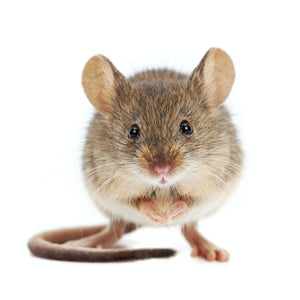 There are many varieties of fancy mice, with varying markings and coat types, however, the most common mouse is the white mouse with red or black eyes.
There are many varieties of fancy mice, with varying markings and coat types, however, the most common mouse is the white mouse with red or black eyes.
Housing
- Escape proof wire mesh cage with plastic or metal solid floor. Ensure mesh is sufficiently small as mice can squeeze through very small spaces.
- At PAWS we recommend housing your mouse in a Gerbilarium. If you choose to house your mouse in a glass aquarium, it must be suitably ventilated. Wood cages are not suitable, as mice can chew their way out.
- Mice enjoy exploring, so an environment with multi storeys, ladders, a nest box, tubes, toys and an exercise wheel are ideal.
Bedding
- Spread a layer of Carefresh or Back 2 Nature about 2 inches deep around the bottom of the mouse cage.
- Do not use sand or sawdust in the mouse cage as this can cause respiratory problems.
- At PAWS we sell woolly and paper bedding which is ideal for your mouse cage.
Feeding
- Mice need a fairly high protein content in their diet to keep them in good condition. A muesli style mix for your mouse is ideal as well as small amounts of fruit and vegetables added for variety.
- Do not give your mouse human snacks as they may be high in sugar, salt or fat.
- Provide clean, fresh drinking water daily from a gravity-fed bottle.
Handling
- Mice can move quickly so young children may not be able to handle them easily. Be careful not to handle your mouse too roughly or drop them, as this may lead to trauma.
- To handle a mouse, slide your hand underneath it with your palm upwards. Lift your hand up slowly with the mouse sitting on it.
- When a mouse is at ease with you, they may walk onto your palm if you hold your hand open in front of them. Alternatively scoop them up very gently being careful not to squeeze too tightly around the body.

